On 27 April 2025, Sonam Modhwadia took on the legendary TCS London Marathon, running every mile with purpose, in support…

Recently, a bizarre question took hold of social media: Could 100 men take on a gorilla in a fight?
What started as a throwaway online debate quickly became a viral sensation. Theories were shared, memes created, and stories shared with hypothetical battle plan. Wildlife expert and Gorilla Organization trustee Giles Clarke was asked the question by JOE. His answer was simple: “The gorilla would absolutely wreck one hundred men.”
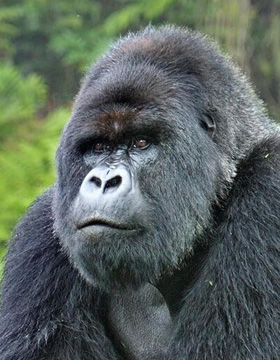
He’s not wrong. An adult male gorilla can weigh more than 180 kilograms and lift close to a tonne. They are astonishingly strong, but also intelligent, emotionally complex, and most of the time, peaceful. Contrary to what you might assume, gorillas are typically quiet, shy and unaggressive, unless provoked.
But while the internet argues over imaginary fights, real gorillas in the wild are facing real threats. And they are losing.
Right now, in the forests of eastern Congo, the situation is urgent. Armed conflict in the region is putting both endangered gorillas and the rangers who protect them in serious danger. This part of the world is home to some of the last mountain and Grauer’s gorillas, a critically endangered subspecies that depend on a fine balance of forest, safety, and stability to survive.
As violence spreads, rangers are being forced to suspend patrols and abandon conservation camps. These are not just jobs, they are lifelines. Without protection, gorilla families are at risk from poaching, habitat destruction, and the chaos that conflict brings to already fragile ecosystems.
Gorillas are not just strong. They are one of our closest living relatives, sharing around 98 percent of our DNA. They live in tight-knit families, communicate through gestures and vocalisations, and care deeply for their young. They are far more than the internet’s punchline.
At The Gorilla Organization, we have spent decades working with local communities across central and eastern Africa to support gorilla conservation. It is not just about keeping animals alive. It is about ensuring forests thrive, people have alternatives to destructive industries, and rangers can do their work without risking their lives.
So while 100 Men vs One Gorilla grabs attention online, the real story is this: gorillas are in danger, and they need our help.
We have launched an emergency appeal to support rangers during the crisis in Congo and keep vital conservation work going. If you want to do something meaningful for gorillas, now is the time.
Please donate today. Help us protect them before it’s too late.

On 27 April 2025, Sonam Modhwadia took on the legendary TCS London Marathon, running every mile with purpose, in support…
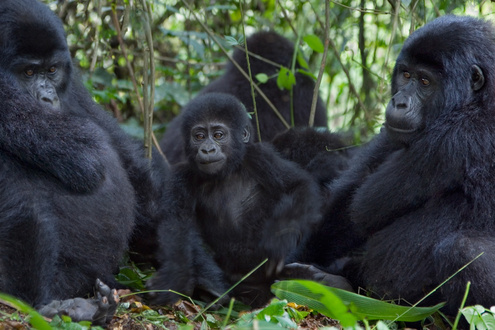
A surge in Mpox cases across the Democratic Republic of the Congo has triggered an urgent conservation response to protect…
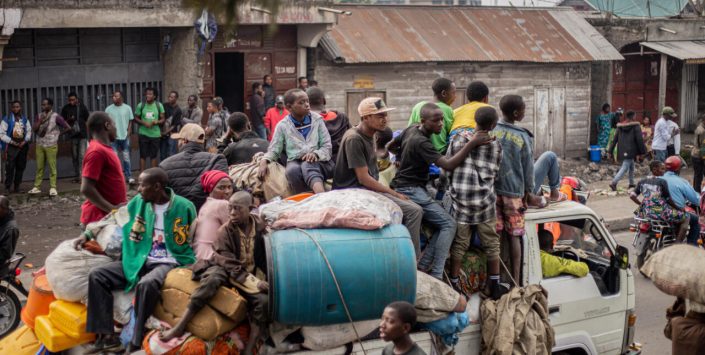
Once again we fear for our staff as the situation in Goma, North Kivu, DR Congo continues to deteriorate. According…
On 27 April 2025, Sonam Modhwadia took on the legendary TCS London Marathon, running every mile with purpose, in support of The Gorilla Organisation. Inspired by a life-changing visit to East Africa in 2024, Sonam chose to run for gorillas and the communities working to protect them.

“Following an amazing visit to East Africa in 2024, I’m running the 2025 London Marathon (yikes) for The Gorilla Organisation,” she wrote on her fundraising page. “They take a community-led approach to save wild gorillas from extinction, whilst also transforming the lives of thousands of people, most of them living in some of Africa’s poorest communities.”
And she did it! Sonam completed the 26.2-mile course in an impressive 4 hours and 51 minutes, cheered on by thousands lining the streets of London. She also surpassed her fundraising target, raising a fantastic £2,199, all of which will go towards our work with communities in Uganda and the Democratic Republic of Congo to protect endangered gorillas and support the people living alongside them.
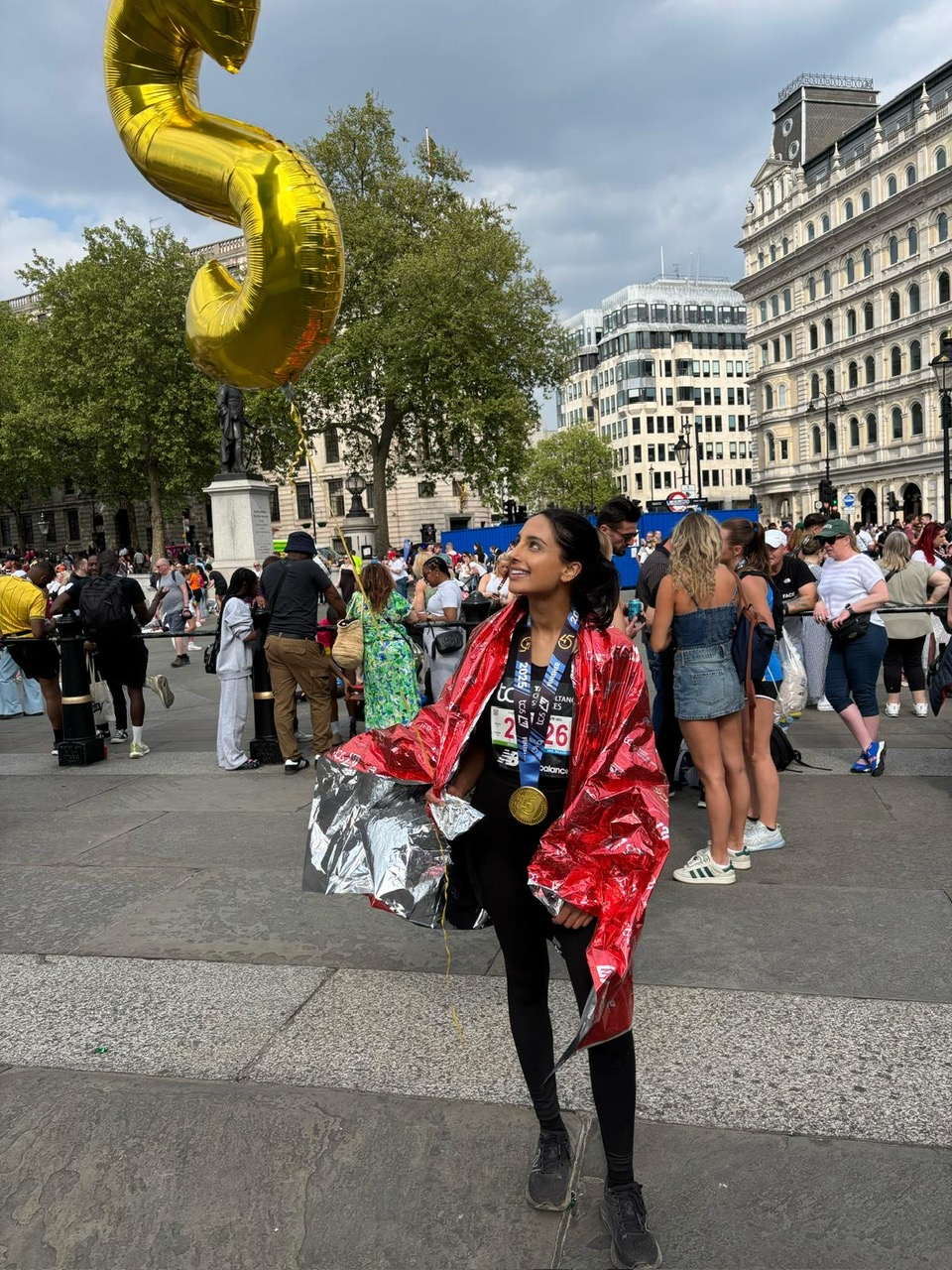
After the race, Sonam shared with us: “Truly was a life goal – so thank you for letting me run on behalf of the org.”
We’re incredibly proud of her and so grateful for her dedication. Every pound she raised helps us continue our mission: protecting critically endangered gorillas and ensuring local people benefit from conservation efforts.
This year’s London Marathon saw over 50,000 runners take part, making it one of the biggest ever. Together, participants raised an estimated £75 million for hundreds of charities, a powerful reminder of what can happen when passion meets purpose.
To Sonam, and to all those who support our work in so many different ways: thank you.
Interested in running the marathon for Team Gorilla next year? Contact sopie@gorillas.org to enquire about a place today.
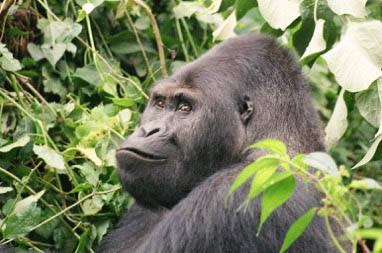
Recently, a bizarre question took hold of social media: Could 100 men take on a gorilla in a fight? What…

A surge in Mpox cases across the Democratic Republic of the Congo has triggered an urgent conservation response to protect…

Once again we fear for our staff as the situation in Goma, North Kivu, DR Congo continues to deteriorate. According…
A surge in Mpox cases across the Democratic Republic of the Congo has triggered an urgent conservation response to protect the country’s critically endangered gorilla populations.
Mpox is a viral disease that can spread between humans and animals. While it typically causes fever, skin lesions and fatigue in people, it poses a far greater risk to great apes, whose close genetic similarity to humans leaves them highly vulnerable to outbreaks.
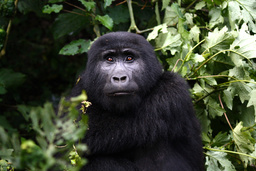
The Gorilla Organization has moved quickly to roll out protective measures in key habitats, as the virus, known to spread between humans and animals, continues to circulate. The DRC is home to three gorilla subspecies: the Grauer’s gorilla, the mountain gorilla, and the western lowland gorilla. All are under threat, and their close genetic relationship to humans makes them especially vulnerable to outbreaks like this one.
By late 2024, Mpox had spread across multiple provinces in the DRC. At the same time, growing instability in the east of the country made response efforts more difficult. On 31 January, the rebel group M23 took control of the city of Goma, where The Gorilla Organization’s regional office is based. The conflict has displaced thousands of people and created conditions that have accelerated the virus’s spread.
Despite these obstacles, field teams have remained operational. In a crucial step, rapid antigen test kits for Mpox were delivered to ranger stations. Rangers now test themselves before entering the forest. Those who test positive are referred for treatment, helping prevent any risk of passing the virus on to the animals they protect.
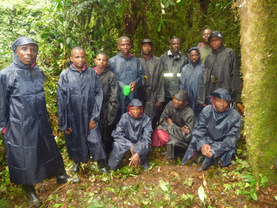
To reduce outside exposure, rangers have also been equipped with long-term supplies such as food, medical kits, and protective clothing, allowing them to remain in remote areas for extended periods without returning to high-risk zones.
So far, there have been no reported Mpox cases among gorilla populations, and the early signs are encouraging. But with the virus still circulating and the security situation unstable, The Gorilla Organization is maintaining a high level of vigilance.
Monitoring continues across key gorilla habitats, and community engagement efforts are being expanded to raise awareness of disease risks. While the immediate threat has been contained, the coming months remain critical.
This work would not be possible without the support of donors. Every contribution has helped protect gorillas on the ground and strengthen our ability to respond in moments of crisis. With continued support, we aim to keep these efforts going and keep gorillas safe.

Recently, a bizarre question took hold of social media: Could 100 men take on a gorilla in a fight? What…

On 27 April 2025, Sonam Modhwadia took on the legendary TCS London Marathon, running every mile with purpose, in support…

Once again we fear for our staff as the situation in Goma, North Kivu, DR Congo continues to deteriorate. According…
Once again we fear for our staff as the situation in Goma, North Kivu, DR Congo continues to deteriorate. According to government statistics, around 7,000 people have been killed since armed groups, spearheaded by the infamous M23 rebels, took hold of the city at the end of January. And as many as 600,000 people have been displaced as the insecurity drives a major humanitarian crisis across the whole region.

The M23 soldiers have taken even more ground, pushing deeper into Congo and also capturing the main city of South Kivu, Bukavu. Now it looks like they will continue to take ground in the mineral-rich regions. There are reports and rumours circulating that they have taken the town of Walikale, a strategic point on the main road through the area and also the base of the Gorilla Organization’s project at Walikale Community Reserve where a team of 50 rangers protect a fragile ecosystem and a population of eastern lowland gorillas.
In the city of Goma itself, fear, insecurity and uncertainty dominate. This has led to a general atmosphere of lawlessness, with looting rife. Even health centres have been looted, depriving people of vital medicines. However, the Gorilla Organization’s team in the city also report that large numbers of people are actually returning to Goma as they feel it is safer than the surrounding areas. In the short-term, this will only exacerbate the enormous pressure on resources. The team, like most Goma residents, have been without electricity or even clean water for much of the past few weeks, resorting to drinking rainwater.
While the general feeling right now in Goma is one of uncertainty, many are also increasingly resigned to accepting the ‘new normal’ of rebel control. Residents are busy clearing up the damage done by fighting in the city, and there are suggestions that the new authorities will recruit former security and police personnel to help bring order back to Goma.
Despite the enormous challenges, the team in Goma are determined to carry on with their work. The manager of the Gorilla Organization’s Forest People’s Project defied the risks to travel into Goma to provide up-to-date reports on the situation outside of the city. For now, the road between Goma and Rusthuru – a vital lifeline for the rural communities – has reopened. Community-based conservation work continues, as Country Manager Henry Cirhuza maintains risky but vital trips to the projects, struggling through roadblocks and terrible roads on his moped.
The humanitarian crisis unfolding in Goma is also having a devastating impact on the environment. According to research carried out by MongaBay, rates of habitat loss in both the Kahuza-Biega National Park and the Virunga National Park has accelerated rapidly over recent months as both rebels and displaced residents encroach into the protected homes of Congo’s mountain gorillas. It is estimated that the amount of tree cover being lost is now around 50,000 acres a year, up from around 1,300 acres a year lost between 2019 and 2022.
Worryingly, illegal charcoal production rates have soared. Rebel groups have taken control of several of the towns and communities located on the park boundaries, including Tchivanga, which is home to the Virunga National Park headquarters. This means ranger patrols are unable to go into the forests to shut down illegal charcoal operations and protect gorillas and other wildlife.
Attempts to broker a ceasefire, both by the European Union and Qatar, have so far come to nothing. The situation remains uncertain, both for the Gorilla Organization team in DR Congo, as well as for the gorillas they work tirelessly to protect.

Recently, a bizarre question took hold of social media: Could 100 men take on a gorilla in a fight? What…

On 27 April 2025, Sonam Modhwadia took on the legendary TCS London Marathon, running every mile with purpose, in support…

A surge in Mpox cases across the Democratic Republic of the Congo has triggered an urgent conservation response to protect…
The Itombwe Nature Reserve in the Democratic Republic of Congo (DRC) is one of the last safe havens for the critically endangered Grauer’s gorilla. With their population declining by over 80% in recent decades, these incredible creatures rely on the protection of this vast and biodiverse forest. Thanks to your support, we’re making significant progress in safeguarding their home and strengthening conservation efforts.
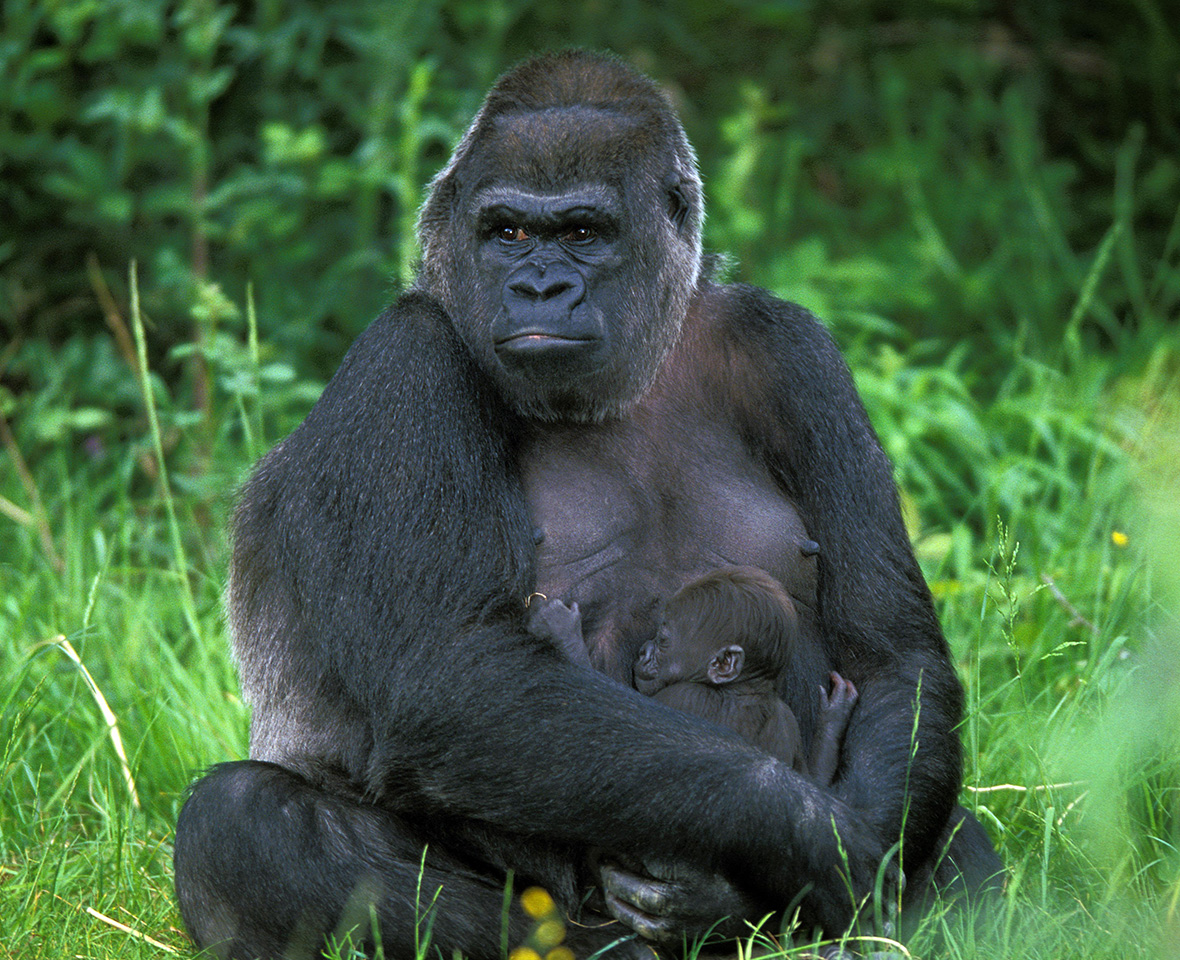
Protecting Itombwe is no small task. Just 55 dedicated rangers patrol over 6,000 square kilometres of dense forest, facing dangerous terrain, poachers and armed militia. These brave individuals are the first line of defence for Grauer’s gorillas and other endangered species who inhabit the reserve. Their work is demanding, often requiring long treks through thick vegetation in harsh conditions. With your help, we’ve expanded patrols, supplied rangers with better equipment, and levelled up their training. As a result, poaching and illegal mining are decreasing, giving the forest and its wildlife a chance to recover.
From our experience, we know that conservation works best when local people are involved, and our efforts extend beyond the forest to the communities living around it. We’ve been working with local leaders and using radio broadcasts to raise awareness about the importance of Itombwe’s wildlife. New radio antennas now bring educational programmes to even the most remote villages, helping people understand how they can play a role in protecting this essential habitat. When we build strong partnerships, we foster a sense of shared responsibility and encourage sustainable practices that benefit both wildlife and local people. This includes supporting sustainable livelihoods. By helping communities find alternatives to illegal mining and deforestation, we are ensuring that both people and nature can thrive together.

Your contributions are making a real difference in protecting one of the world’s most endangered primates and preserving a crucial ecosystem. Together, we can ensure that Itombwe remains a safe haven for Grauer’s gorillas and a sustainable resource for local communities. Thank you for being part of this vital mission!

Recently, a bizarre question took hold of social media: Could 100 men take on a gorilla in a fight? What…

On 27 April 2025, Sonam Modhwadia took on the legendary TCS London Marathon, running every mile with purpose, in support…

A surge in Mpox cases across the Democratic Republic of the Congo has triggered an urgent conservation response to protect…
Bwindi Impenetrable National Park has welcomed another new life, with the birth of a baby mountain gorilla in the Mucunguzi family. The infant, born to the adult female Nyakiruka, was first spotted on 19th January 2025. Both mother and baby are in good health, closely guarded by Mucunguzi, the dominant silverback and leader of the group.
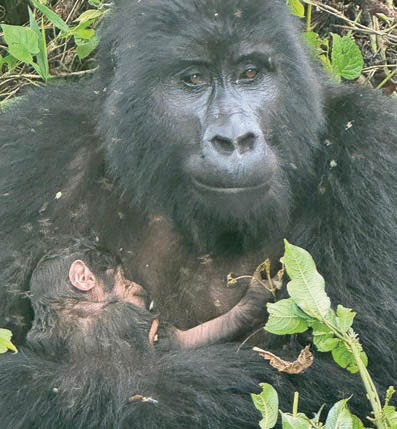
A Growing Gorilla Family
The birth brings the Mucunguzi family to a total of 16 members. The group, which resides in Bwindi’s Rushaga sector, is one of the more recently habituated gorilla families. It takes its name from Mucunguzi, the silverback leader, whose name means ‘saviour’ in the local language.
Gorilla families typically range in size from five to thirty individuals and are led by a dominant silverback. Mucunguzi formed his own family after splitting from the Bweza group following a confrontation. Since then, the family has continued to grow, and this latest addition is a promising sign of its strength and stability.
Conservation Efforts
Nyakiruka’s baby is not just a symbol of new life, but also a testament to the effectiveness of conservation efforts in Uganda. Bwindi Impenetrable National Park is one of the last remaining strongholds for mountain gorillas, alongside Mgahinga Gorilla National Park and the Virunga Mountains in Rwanda and the Democratic Republic of Congo. With Uganda home to over 450 mountain gorillas—more than half of the global population—each birth contributes to the survival of this critically endangered species.
Over recent years, dedicated conservation initiatives have led to a steady rise in gorilla births. Data from the Uganda Wildlife Authority (UWA) highlights this progress, with multiple births recorded each year as a result of sustained anti-poaching efforts, habitat preservation, and community engagement. Despite these successes, challenges persist. With only 1,069 mountain gorillas left in the wild, each newborn is crucial to the species’ future.
Protecting the Future of Mountain Gorillas
Newborn gorillas face significant challenges in their early months. While their silverback leader offers protection against natural threats, dangers such as habitat destruction, disease, and poaching remain ever-present. Even the strongest gorilla cannot guard against a poacher’s snare or the loss of its forest home.
Your support can help ensure the safety of Nyakiruka’s baby and many others. Donations contribute to vital conservation work, including ranger patrols, veterinary care, and sustainable initiatives that benefit both wildlife and local communities. With each new birth, hope grows for the future of mountain gorillas. The arrival of this infant in the Mucunguzi family is a powerful reminder of the progress being made and the ongoing need for conservation efforts. Together, we can help secure a future where mountain gorillas continue to thrive in their natural habitat.

Recently, a bizarre question took hold of social media: Could 100 men take on a gorilla in a fight? What…

On 27 April 2025, Sonam Modhwadia took on the legendary TCS London Marathon, running every mile with purpose, in support…

A surge in Mpox cases across the Democratic Republic of the Congo has triggered an urgent conservation response to protect…